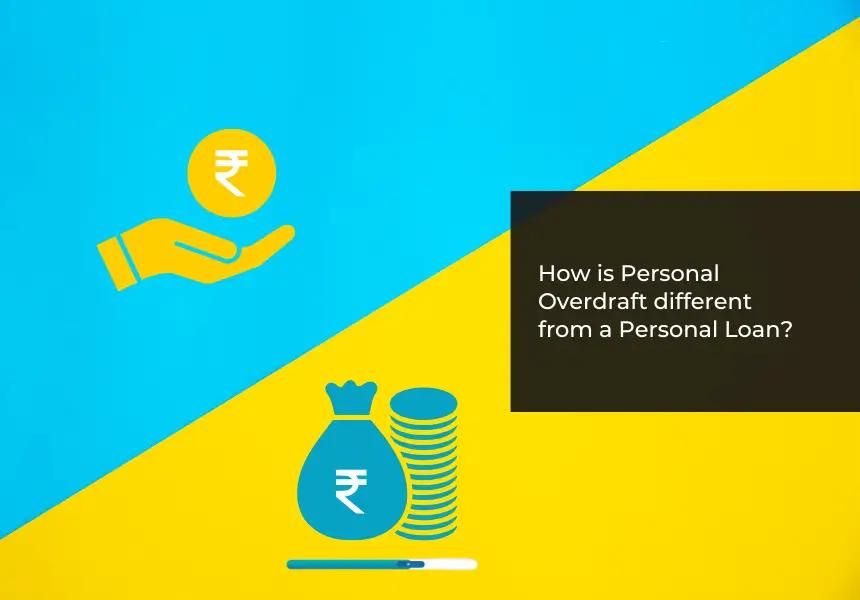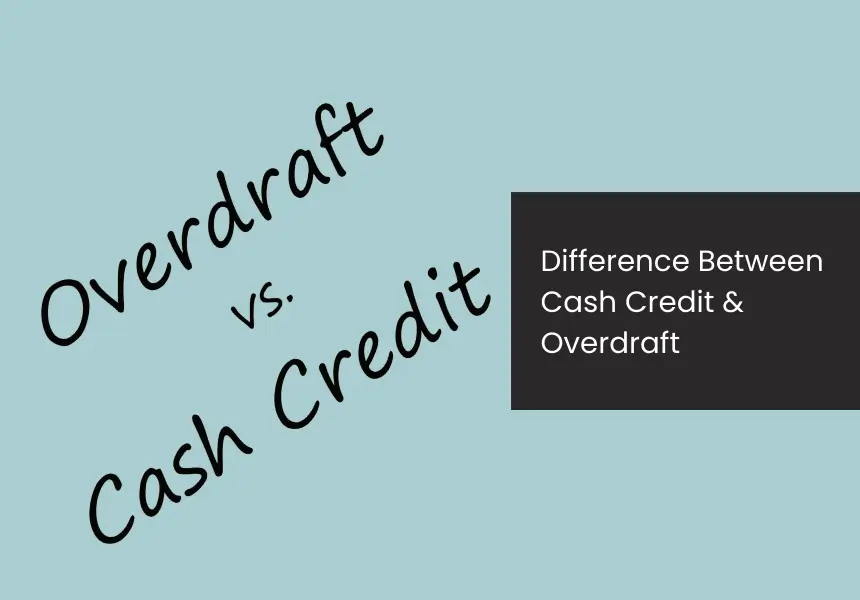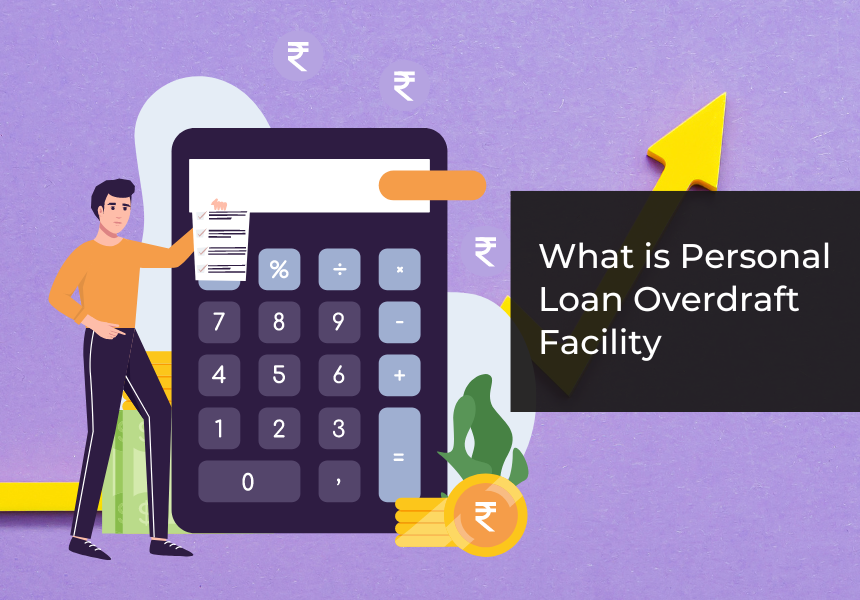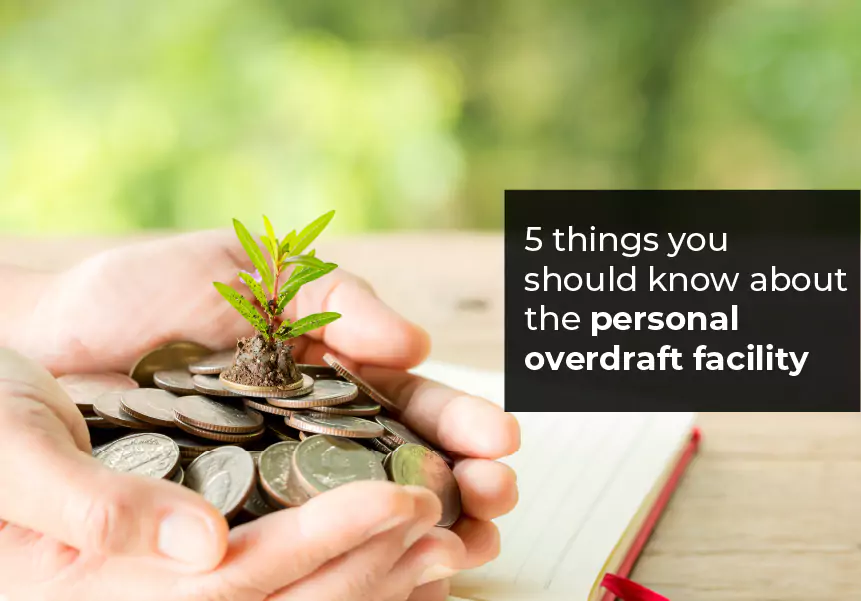
Have you ever encountered an unexpected expense that throws your budget off track? Financial products exist to help you bridge these temporary gaps. Two major options that come to mind are personal loans and overdrafts. Understanding the difference between personal loans and overdraft facilities allows you to make informed financial decisions when unforeseen circumstances occur.
Choosing between a personal loan and an overdraft depends on the amount you need, repayment terms, and interest rates. Here, we aim to shed light on these aspects, empowering you to make the right financial choice.
What is a Personal Loan?
A personal loan is financing offered by banks, credit unions, and online lenders. It provides you with a fixed sum of money you borrow and repay over a set term, typically in monthly installments. Unlike mortgages or car loans, personal loans are unsecured, meaning you don’t need to pledge an asset as collateral.
These loans are attractive choices because of their versatility. You can use the funds for various purposes, such as consolidating debt, covering unexpected expenses, making home improvements, or financing a special occasion. Your creditworthiness, salary, and work history all play a role in the approval process.
Interest rates and loan conditions change depending on the lender and your financial situation. It’s important to remember that interest rates on personal loans are usually higher than those on secured loans.
What is an Overdraft?
Overdraft is a financial service provided by a bank or other financial institutions that permits a borrower to withdraw more money than is currently in their account.
It acts as a short-term line of credit linked to the individual’s account. When a borrower makes a transaction that exceeds the available balance in their account, the overdraft can help cover the shortfall.
When unforeseen costs or a temporary shortage of funds occur, this can be quite helpful. However, overdrafts typically have associated fees and interest charges, making borrowing relatively expensive.
Despite this, they provide flexibility and convenience for account holders, offering a buffer against potential financial constraints. For those who want to manage their money and stay out of debt properly, it is important to understand how overdrafts operate and the expenses that come with them.
Difference Between Loan and Overdraft
Here, we have explained overdraft vs personal loan
Availability
Personal Loan: Personal loans are typically a lump sum amount disbursed to the borrower upon approval, and the borrower repays it in fixed instalments over a specified period.
Overdraft: Overdraft facilities are attached to a current account, allowing the account holder to withdraw funds beyond the available balance. It provides flexibility in accessing funds as needed, up to a predetermined limit.
Interest Rate
Personal Loan: Personal Loans usually have a fixed or variable interest rate applied to the entire loan amount.
Overdraft: Interest is charged only on the amount overdrawn and is typically higher than standard loan interest rates.
Modification in Credit Limit
Personal Loan: Credit limits on loans are usually fixed and cannot be altered during the loan tenure.
Overdraft: The credit limit on overdraft facilities can be adjusted periodically based on the borrower’s creditworthiness.
Tenure
Personal Loan: Personal loans have a predetermined repayment schedule with fixed monthly installments over a specified period.
Overdraft: Overdrafts are usually open-ended facilities without a fixed repayment period; the borrower can use the facility if it remains within the agreed-upon terms.
Prepayment Charges
Personal Loan: Some loans may have prepayment charges if the borrower decides to pay off the loan before the stipulated tenure.
Overdraft: Overdraft facilities generally do not have prepayment charges since borrowers can repay the overdraft amount anytime without penalties.
Which is the Better Choice?
Whether an overdraft or a personal loan is better depends on individual financial circumstances and borrowing needs. For those requiring short-term access to funds, an overdraft may be preferable due to its flexibility and immediate availability.
However, overdrafts often come with higher interest rates, making them more expensive for long-term borrowing. On the other hand, personal loans are better suited for greater expenses or longer borrowing durations because they have fixed monthly installments, lower interest rates, and specified repayment schedules. Personal loans provide clarity and stability in budgeting and financial planning.
Ultimately, the better choice is based on factors such as the purpose of borrowing, the urgency of funds, and the borrower’s ability to manage repayments effectively. People can make wiser choices about their finances by considering these factors, helping them align their decisions with their financial goals and current situation.
Conclusion
Overdrafts and personal loans offer distinct advantages depending on individual financial needs and preferences. Overdrafts provide immediate access to funds with repayment flexibility, making them suitable for short-term cash flow management or unexpected expenses.
On the other hand, personal loans offer structured repayment terms, lower interest rates, and fixed installments, making them ideal for larger expenses or longer borrowing periods. The choice between the two depends on factors such as the purpose of borrowing, urgency of funds, and ability to manage repayments effectively.
LoanTap provides personal loans and overdrafts at affordable interest rates.
FAQs
Can I modify the credit limit on my personal overdraft or personal loan?
Ans. With a personal overdraft, the credit limit can be adjusted periodically based on your creditworthiness and banking relationship. However, in case of a personal loan, you receive a lump sum amount that’s fixed throughout the loan tenure and cannot be modified.
What is the difference in tenure between a personal overdraft and a personal loan?
Ans. Personal loans have a predetermined repayment schedule with fixed monthly installments over a specified period. In contrast, personal overdrafts are usually open-ended facilities without a fixed repayment period.
Which option is better for short-term financial needs?
Ans. A personal overdraft may be more suitable for short-term financial needs due to its flexibility in accessing funds. It provides immediate relief for unexpected expenses or temporary cash flow shortages.
Do personal overdrafts and personal loans have different impacts on my credit score?
Ans. Both personal overdrafts and personal loans can affect your credit score but in various ways.While excessive reliance on a personal overdraft or missed payments might have negative effects, timely repayment of a personal loan can favourably impact your credit score.
How do I repay a personal overdraft compared to a personal loan?
Ans. Repayments for a personal overdraft are flexible, and you can repay the overdrawn amount whenever funds become available in your account. Personal loans require fixed monthly repayments over the agreed-upon tenure.








